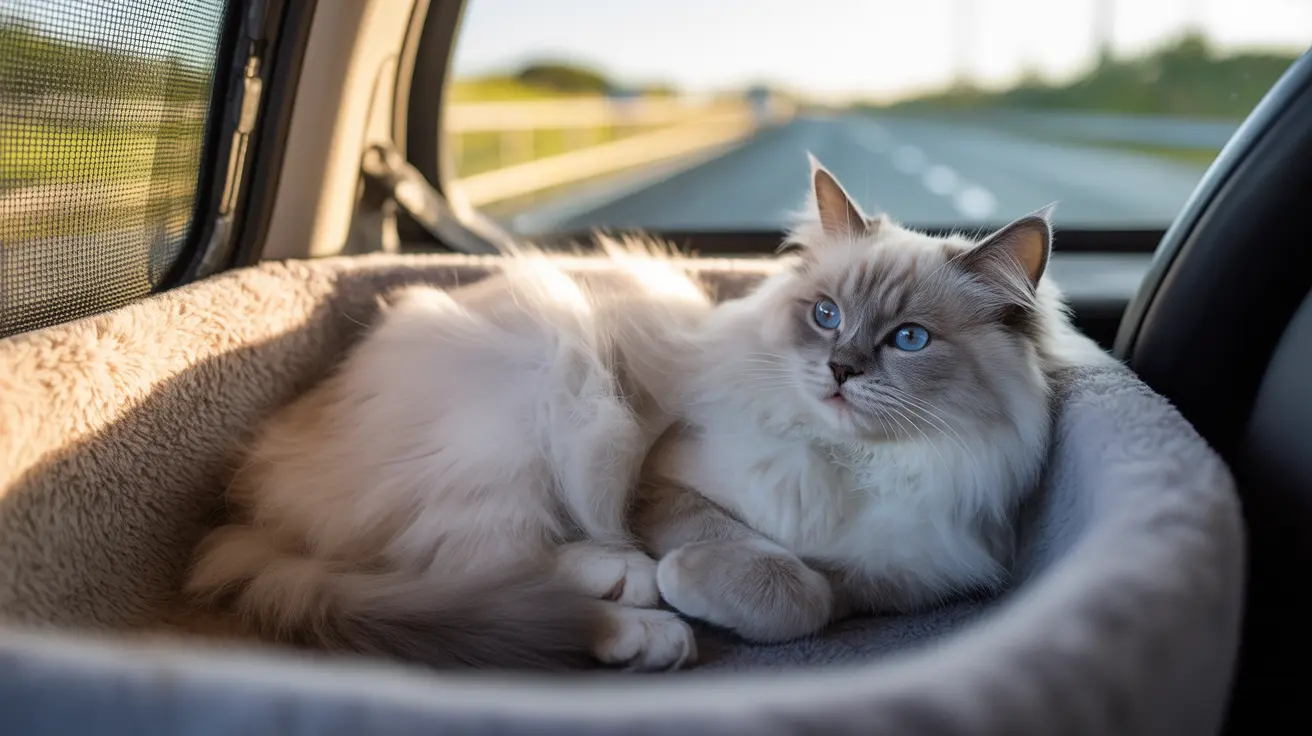If you've noticed your cat panting during car rides, you're right to be concerned. Unlike dogs, panting in cats is uncommon and can signal anything from mild stress to a serious medical emergency. Understanding why your cat is panting in the car and how to address it is crucial for ensuring safe and comfortable travel with your feline companion.
In this comprehensive guide, we'll explore the causes of cat panting during car rides, how to recognize warning signs, and what steps you can take to help your furry friend travel more comfortably.
Common Causes of Cat Panting During Car Travel
Stress and Anxiety
Most cats find car rides stressful, and panting is often their body's response to anxiety. The unfamiliar movement, sounds, and confined space of a carrier can trigger this behavior. Some cats may pant more heavily when they associate car rides with unpleasant experiences like vet visits.
Temperature Regulation Issues
Cats primarily cool themselves through their paw pads and by grooming, making them more susceptible to overheating than dogs. In a warm car, especially if the carrier is in direct sunlight, your cat may start panting as a last-resort cooling mechanism.
Motion Sickness
Just like humans, cats can experience motion sickness during car rides. The constant movement can disturb their sensitive inner ear balance, leading to nausea and panting. This is particularly common in kittens and cats who rarely travel.
Warning Signs to Watch For
Mild vs. Severe Panting
Mild panting typically resolves once the stressor is removed or the temperature is regulated. However, if your cat shows any of these additional symptoms, it could indicate a serious problem:
- Bluish or pale gums
- Excessive drooling
- Lethargy or collapse
- Rapid breathing that doesn't slow
- Wheezing or coughing
Managing Car Travel with Your Cat
Before the Journey
Preparation is key to reducing travel-related stress and panting:
- Get your cat comfortable with their carrier at home
- Schedule travel during cooler times of day
- Consider anti-anxiety products recommended by your vet
- Ensure the carrier is well-ventilated
During the Trip
Monitor your cat closely and take these precautions:
- Keep the car at a comfortable temperature
- Position the carrier away from direct sunlight
- Provide breaks on longer journeys
- Keep water accessible if possible
Preventing Travel-Related Stress
Carrier Training
Make the carrier a positive space by:
- Leaving it out in your home
- Placing treats and favorite toys inside
- Using comfortable bedding
- Rewarding calm behavior near the carrier
Environmental Modifications
Create a more comfortable travel environment by:
- Using pheromone sprays designed for cats
- Playing soft music to mask road noise
- Covering part of the carrier with a light cloth
- Ensuring proper ventilation
Frequently Asked Questions
Why is my cat panting during car rides, and is it normal?
While panting isn't normal for cats, it can occur during car rides due to stress, anxiety, overheating, or motion sickness. Any panting that persists or is accompanied by other symptoms should be evaluated by a veterinarian.
How can I tell if my cat's panting in the car is due to stress or a medical emergency?
Stress-related panting typically improves when the stressor is removed. If panting continues, is accompanied by blue/pale gums, lethargy, or respiratory distress, it's likely a medical emergency requiring immediate veterinary attention.
What should I do if my cat starts panting while traveling in a car?
First, ensure the car is cool and well-ventilated. If safe, stop and check on your cat. If panting persists or other concerning symptoms develop, seek veterinary care immediately.
How can I prevent my cat from panting or becoming anxious during car trips?
Practice carrier training, use calming aids recommended by your vet, maintain a comfortable car temperature, and gradually acclimate your cat to car travel through short practice trips.
Can heat or overheating cause my cat to pant in the car, and how do I keep them cool?
Yes, overheating can cause panting. Keep your cat cool by maintaining appropriate car temperature, avoiding direct sunlight, ensuring good ventilation, and never leaving them in a parked car.
Conclusion
While cat panting during car rides can be concerning, understanding its causes and taking appropriate preventive measures can help ensure safer, more comfortable travel for your feline friend. Always monitor your cat closely during car rides and don't hesitate to seek veterinary care if you're concerned about their breathing or overall well-being.






